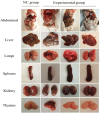Genetic framework sequencing analysis of Candida tropicalis in dairy cow mastitis and study of pathogenicity and drug resistance
- PMID: 39443857
- PMCID: PMC11515676
- DOI: 10.1186/s12866-024-03522-y
Genetic framework sequencing analysis of Candida tropicalis in dairy cow mastitis and study of pathogenicity and drug resistance
Abstract
Candida tropicalis (C. tropicalis) is a zoonotic pathogen that is widespread in the environment and in recent years an increasing number of dairy cows have been infected with the fungus causing mastitis in cows.In this study, 37 milk samples from the udders of cows with clinical mastitis were collected from a dairy farm in Guangxi Province, China, from which C. tropicalis was isolated and identified, and then the isolated fungi were subjected to genome frame map sequencing, genome functional analysis as well as comparative genome analysis of the sequencing results, and combined with the virulence test of the fungi and drug sensitivity test of the fungi determined in infected mice, the resistance genes and pathogenicity of the fungi were Analysis of resistance genes and pathogenicity.Our study results revealed the isolation and characterisation of C. tropicalis from diseased cows, with a genome length of approximately 14.27 Mb. Functional annotation of the genome identified 4068 genes associated with C. tropicalis. The strain exhibited a chemoresistance mutation in the gene cyp51,a virulence-enhancing mutation in the gene VTC4, and mutations in genes linked to drug resistance. Pathogenicity tests demonstrated that C. tropicalis could induce damage to the internal organs of mice, leading to different levels of cyanosis in the abdominal cavity, white necrotic foci on the surface of internal organs, lung hemorrhage, and enlargement of the spleen and thymus.Histological sections also revealed varying degrees of hemorrhage and degenerative changes in the cells of different organs in the mice. Drug sensitivity tests showed that the fungus was highly sensitive to nystatin and ketoconazole, moderately sensitive to amphotericin B, and insensitive to antibiotics such as itraconazole, gentamicin, and penicillin. In conclusion, C. tropicalis isolated from dairy cows in the Guangxi region in this study was pathogenic and resistant to azoles such as itraconazole and fluconazole, and this study provides a theoretical basis for the further screening of novel resistance genes in C. tropicalis, as well as providing a certain reference for the drugs used for the treatment of fungal cow mastitis in this region.
Keywords: C. Tropicalis; Drug resistance; Genome sequence; Mastitis; Pathogenicity.
© 2024. The Author(s).
Conflict of interest statement
The authors declare no competing interests.
Figures







Similar articles
-
Epidemiological investigation of non-albicans Candida species recovered from mycotic mastitis of cows in Yinchuan, Ningxia of China.BMC Vet Res. 2018 Aug 29;14(1):251. doi: 10.1186/s12917-018-1564-3. BMC Vet Res. 2018. PMID: 30157847 Free PMC article.
-
Mycological and molecular identification of mycoses involved in mastitis from Holstein dairy cattle with special reference to Candida albicans.Vet Res Commun. 2025 May 2;49(4):187. doi: 10.1007/s11259-025-10744-6. Vet Res Commun. 2025. PMID: 40314878
-
Molecular mechanisms of azole resistance in Candida tropicalis isolates causing invasive candidiasis in China.Clin Microbiol Infect. 2019 Jul;25(7):885-891. doi: 10.1016/j.cmi.2018.11.007. Epub 2018 Nov 22. Clin Microbiol Infect. 2019. PMID: 30472420
-
Candida tropicalis: its prevalence, pathogenicity and increasing resistance to fluconazole.J Med Microbiol. 2010 Aug;59(Pt 8):873-880. doi: 10.1099/jmm.0.013227-0. Epub 2010 Apr 22. J Med Microbiol. 2010. PMID: 20413622 Review.
-
The yeast, the antifungal, and the wardrobe: a journey into antifungal resistance mechanisms of Candida tropicalis.Can J Microbiol. 2020 Jun;66(6):377-388. doi: 10.1139/cjm-2019-0531. Epub 2020 Apr 22. Can J Microbiol. 2020. PMID: 32319304 Review.
Cited by
-
Research progress on the drug resistance mechanisms of Candida tropicalis and future solutions.Front Microbiol. 2025 May 12;16:1594226. doi: 10.3389/fmicb.2025.1594226. eCollection 2025. Front Microbiol. 2025. PMID: 40421464 Free PMC article. Review.
References
-
- K J, et al. Antimicrobial treatment of clinical mastitis in the eastern United States: the influence of dairy farmers’ mastitis management and treatment behavior and attitudes. J Dairy Sci. 2017;100(2):1388–407. - PubMed
-
- Guzmán-Luna P, et al. Quantifying current and future raw milk losses due to bovine mastitis on European dairy farms under climate change scenarios. Sci Total Environ. 2022;833:155149. - PubMed
-
- Modak R, et al. Histone H3K14 and H4K8 hyperacetylation is associated with Escherichia coli-induced mastitis in mice. Epigenetics. 2012;7(5):492–501. - PubMed
MeSH terms
Substances
Grants and funding
LinkOut - more resources
Full Text Sources
Medical
Miscellaneous

